Graphic organizers integrate both text and visuals. This has been scientifically proven to be an effective way of teaching and learning. Using them can be extremely useful for both teachers and students as they will make lessons more engaging as well as easily comprehensible.
We have listed below multiple types of graphic organizers you can use during various scenarios, whether you are reading, writing, doing research or studying for exams. Each tool is accompanied by a template that you can use right away.
1. What are Graphic Organizers
1.1. Benefits of graphic organizers
2. Types of Graphic Organizers
2.1. Graphic Organizers for Writing
2.2. Graphic Organizers for Reading
2.2.2. 4. Biography graphic organizer
2.3. Graphic Organizers for Teaching
2.3.2. 7. Analogy graphic organizer
2.3.3. 8. Vocabulary graphic organizer
2.3.4. 9. Problem-solving organizer
2.3.5. 10. Math Graphic Organizer
2.4. Graphic Organizers for Learning
2.4.1. 11. Timeline graphic organizer
2.5. Graphic Organizers for Brainstorming
2.5.3. 17. Cause and effect graphic organizer
2.6. Graphic Organizers for Compare and Contrast
2.6.2.1. Add to Our List of Graphic Organizers for Teachers and Students
What are Graphic Organizers
A graphic organizer is a teaching and learning tool that is used to organize information and ideas in a way that is easy to comprehend and internalize. By integrating text and visuals, graphic organizers show relationships and connections between concepts, terms, and facts.
Graphic organizers can be used in all grade levels, and have proven to be effective learning tools for gifted children and students with special needs. And with adult learners, graphic organizers can help enable the connection between what they already know and newly acquired knowledge.
Benefits of graphic organizers
Different types of graphic organizers can be used across the curriculum for teaching, learning, and note-taking. They are easy to create and impactful in simplifying information.
- Help visualize or present information in a way that is easier to comprehend, by breaking down larger or complex concepts or ideas into smaller and simpler parts.
- Provide students the opportunity to actively contribute and participate in the learning process through the creation of graphic organizers.
- Help develop cognitive skills such as brainstorming, critical and, categorizing and prioritizing content, reflection, etc.
- Help recall prior knowledge about a subject and quickly connect it to new information
- Promotes self-learning. By using graphic organizers for note-taking, analyzing, studying, etc. students can familiarize themselves with a lesson far more easily.
Types of Graphic Organizers
Here we have listed 19 types of graphic organizers for teaching and learning. Based on their varied purposes, you can utilize them in reading, writing, researching, brainstorming, and analyzing.
Graphic Organizers for Writing
1. Persuasion map
The persuasion map is an interactive graphic organizer that helps students familiarize themselves with the process of persuasive writing . It assists them with outlining and preparing arguments for their essays, speeches, debates, etc.
How to use it
Step 1: Choose a topic of interest for your essay/debate. Do proper research around it to collect enough information.
Step 2: Define the claim that you want to make with your essay. Persuasive writing by writing this down first.
Step 3: Next to it, write down the reasons for making that claim.
Step 4: Then write down facts, examples, and information to back up your reasoning.
Step 5: End your persuasion map with the conclusion of your essay.
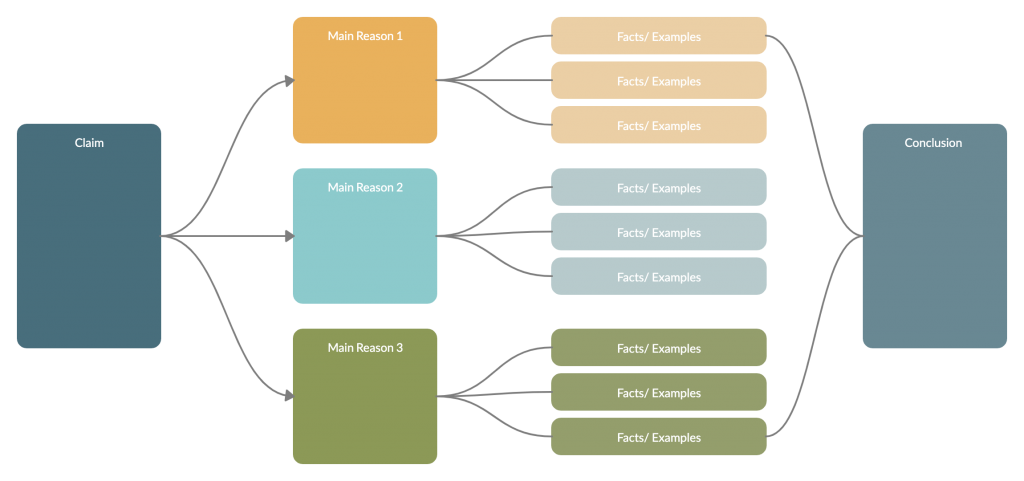
2. Sequence Chart
A sequence graphic organizer is a tool that helps visualize the order of steps of a process or a timeline of events, etc. It can also be used for note-taking, lesson planning, and essay writing.
How to use it
Step 1: Identify the steps in the process or event.
Step 2: Using a sequence chart arrange these steps in sequential order.
Template
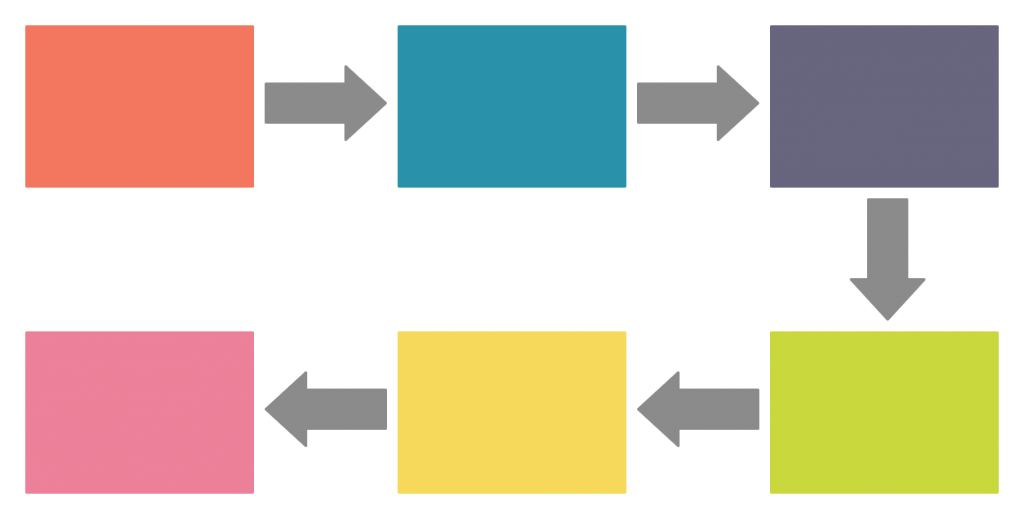
Graphic Organizers for Reading
3. Story map
A story map can be used to identify the different elements such as characters, character plots, themes, techniques, etc. in a book students are reading. It’s a useful tool that teachers can integrate into the lesson to improve students’ comprehension.
How to use it
Step 1: Read the book and understand it well.
Step 2: Discuss the different significant elements that were involved in the story. These could be the characters, setting, problem and solution, etc. You can fill the story map during the discussion.
Step 3: Once the map is complete you can discuss each element individually.
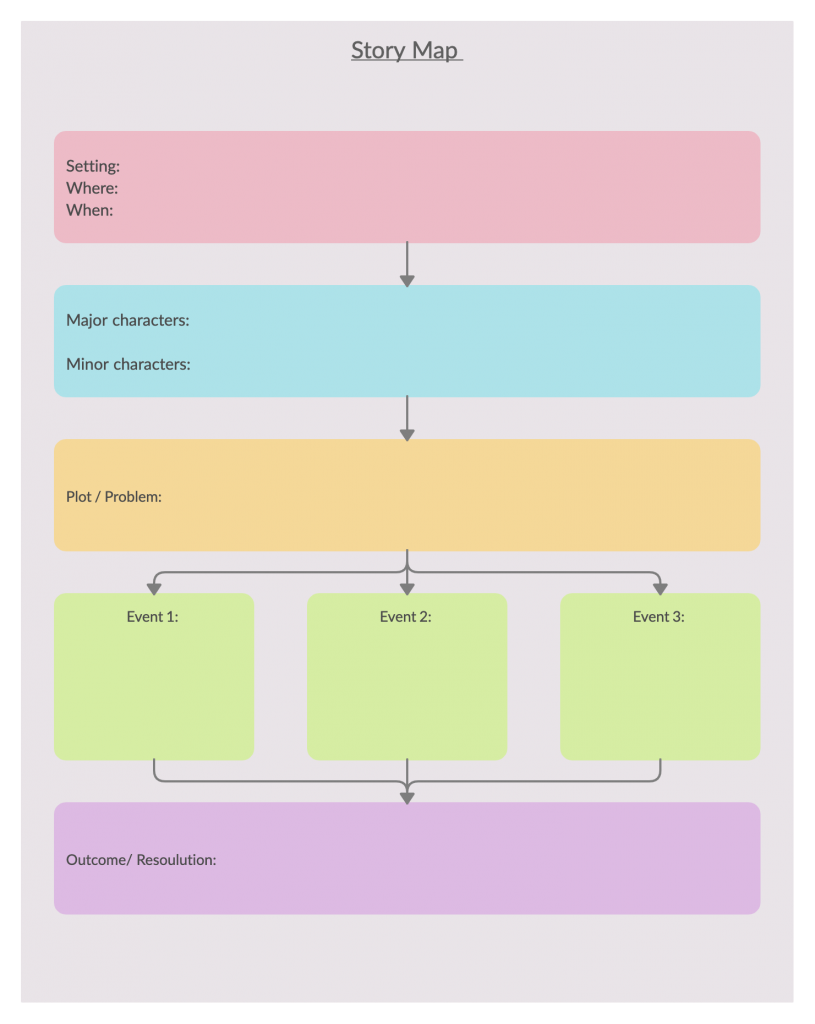
4. Biography graphic organizer
This is a tool that assists with understanding a character from a novel, autobiography or movie or a historical figure more in-depth. It brings attention to various important factors about a person’s life.
How to create it
Step 1: Gather as much information you can about the character you are studying. You can also refer to online resources, or ask from teachers or experts.
Step 2: As you analyze the information you have gathered, isolate the facts that stand out or you think are important.
Step 3: Use your biography graphic organizer to lay out the information in a presentable way. You can add images to make it more comprehensible as well.
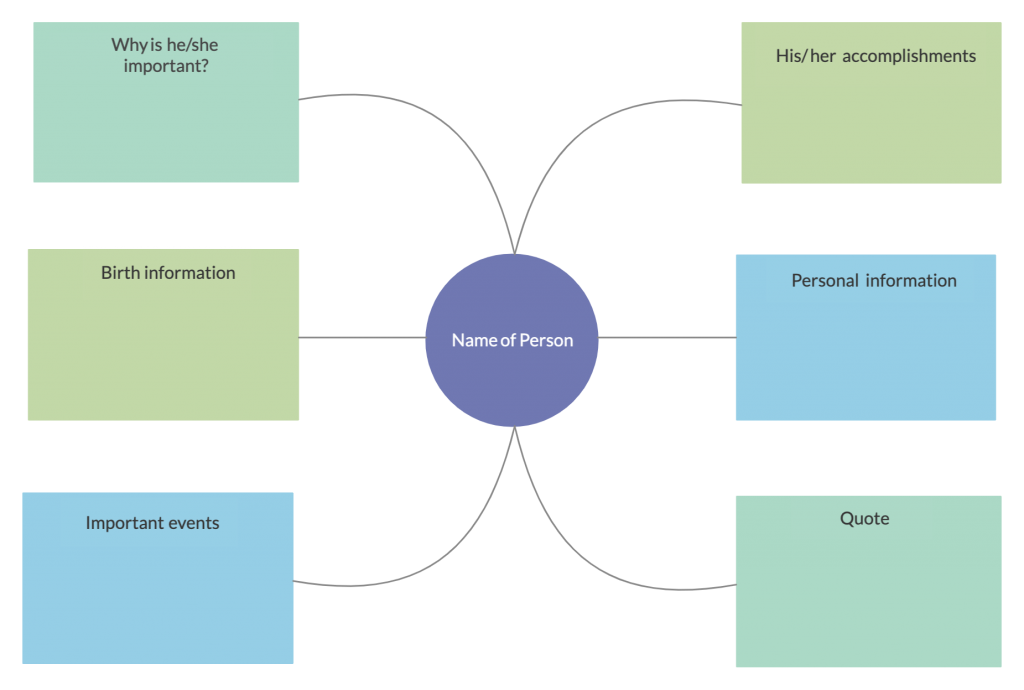
5. KWL chart
KWL chart is used for gathering information from student’s prior knowledge or experience. This 3 column chart captures the before (what the reader already knows), during (what the reader wants to learn) and after (what the reader learned) stages of reading.
How to use it
Step 1: Get students to brainstorm around the selected topic and write down everything they know about it in the K column.
Step 2: Ask them to generate a list of questions about what they want to know in the W column of the chart.
Step 3: During or after reading the book/ lesson get them to answer these questions in the L column.

Graphic Organizers for Teaching
6. Learning map
Learning maps visually depict the key takeaways – skills, ideas, knowledge – students should get from a lesson. It usually provides a high-level view of the lesson/ unit/ course that is to be studied and the connection between its different components. Students can also use learning maps in the classroom for note-taking.
How to use it
Step 1: At the center of the map, write down the topic (i.e. name of the lesson or unit)
Step 2: Brainstorm ideas and information related to it. Write these down on branches emerging from the center. Make sure that you place them in a way that makes sense to teach or in a logical sequence around the center.
Step 3: Add connectors between these elements and add labels to highlight the kind of relationship between them.

7. Analogy graphic organizer
The analogy graphic organizer uses analogy to help students identify similarities and differences between a new topic and a topic that they are already familiar with.
How to use it
Step 1: Select a topic/ concept that the students already know and is analogous in certain aspects to the new topic
Step 2: Introduce the new concept and get the students to read and discuss it
Step 3: Using an analogy graphic organizer, ask the students to brainstorm and write similarities and differences between the two topics.
Step 4: Based on the completed graphic organizer, ask the students to write a brief description of the new topic

Analogy Graphic Organizer (Click on the template to edit it online)
8. Vocabulary graphic organizer
This tool can be used to assess the vocabulary knowledge of students. You can create graphic organizers including various elements to help students learn new words, and learn antonyms and synonyms.
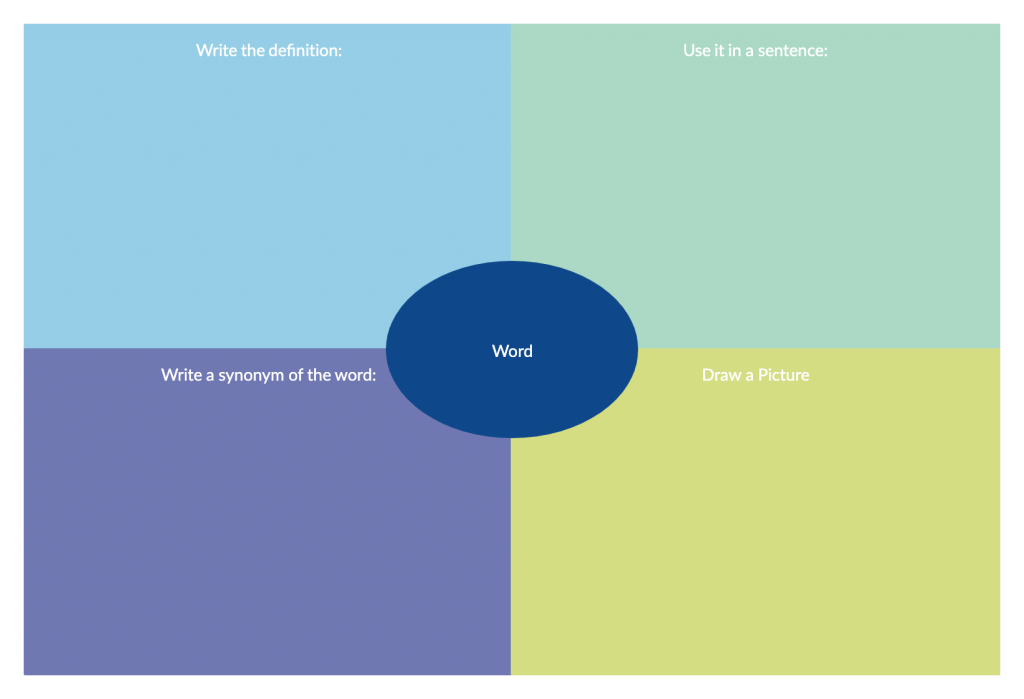
9. Problem-solving organizer
Problem-solving graphic organizers can be used to improve the problem-solving skills of the students. It helps students identify and evaluate solutions to problems.
How to use it
Step 1: Identify the problem and write it in the problem box
Step 2: Ask students to then write down why they think it is a problem in the first place
Step 3: Get them to brainstorm all possible solutions along with the pros and cons relates to them.
Step 4: Once they select the best possible solution, ask them to list down all its possible consequences
Step 5: Students can then make suggestions to improve the selected solution further

10. Math Graphic Organizer
Math graphic organizers are used to describe math concepts graphically to students. It helps with simplifying and solving complex math problems.
How to use it
Step 1: Select the math problem you want to identify and a relevant graphic organizer that you can use to solve it.
Step 2: Invite your students or colleagues to collaborate as you wish.
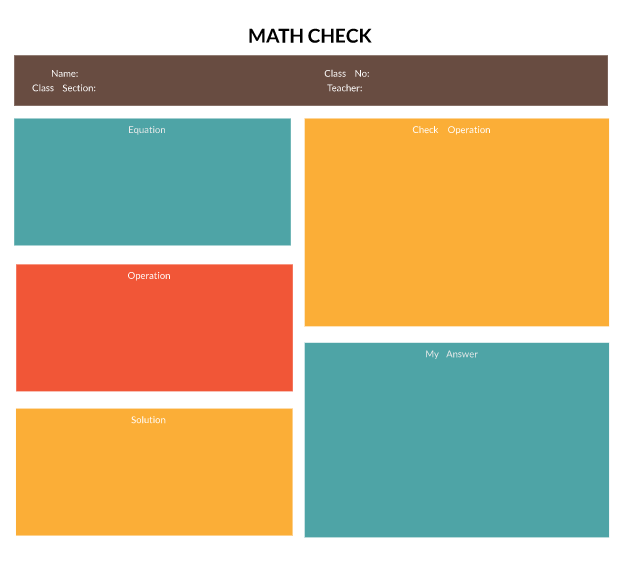
Graphic Organizers for Learning
11. Timeline graphic organizer
Timeline diagrams are a type of graphic organizer that shows a sequence of events in chronological order.
They come in handy when studying history as you can use it to display major historical events that occurred during a period of time along with important details such as dates and locations in which they took place.
In addition, timeline charts can also be used to show the progress of something (i.e. growth of a business) or changes.
How to use it
Step 1: Identify the different events and the sequence of order in which they took place.
Step 2: Use a research on your target audience to arrange them chronologically
Step 3: Include significant details such as dates, locations and other additional information as needed.

12. T chart
T charts allow students to study two facets of a topic. For example, disadvantages and advantages, pros and cons, differences and similarities, etc.
How to use it
Step 1: Draw a T chart and write down the two areas you want to brainstorm around on each column head.
Step 2: Write down facts on each column as you carry out your brainstorming.
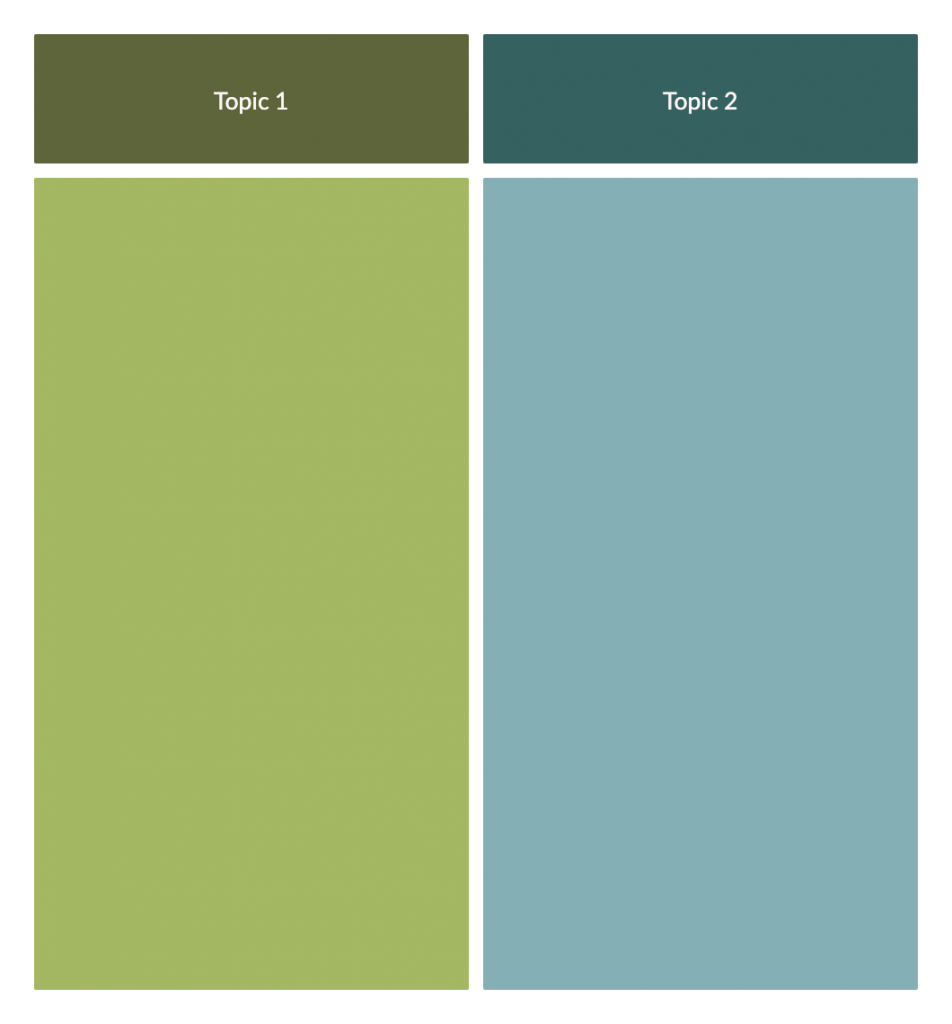
13. Hierarchy chart
Hierarchy charts visualize the elements of a system, organization or concept from its highest position to the lowest. Students can use this tool to understand the superordinate and subordinate categories of a topic and the relationship between them.
How to use it
Step 1: Identify the most important element under the topic you are studying. Write this down at the top of the hierarchy chart.
Step 2: List down the second layer of sub-elements stemming from the first component you have identified. Add a third and fourth as necessary.
Step 3: Connect these with lines to show how they are connected to each other.

14. Star diagram
Star diagrams are used to organize the characteristics of a chosen topic. It can also be used to brainstorm around new topics.
How to use it
Step 1: Select the topic you want to study and write it down in the center of the star diagram.
Step 2: Write down the characteristics or attributes related to the central topics on each point of the star. Adjust the points of the star depending on how many traits you write down.
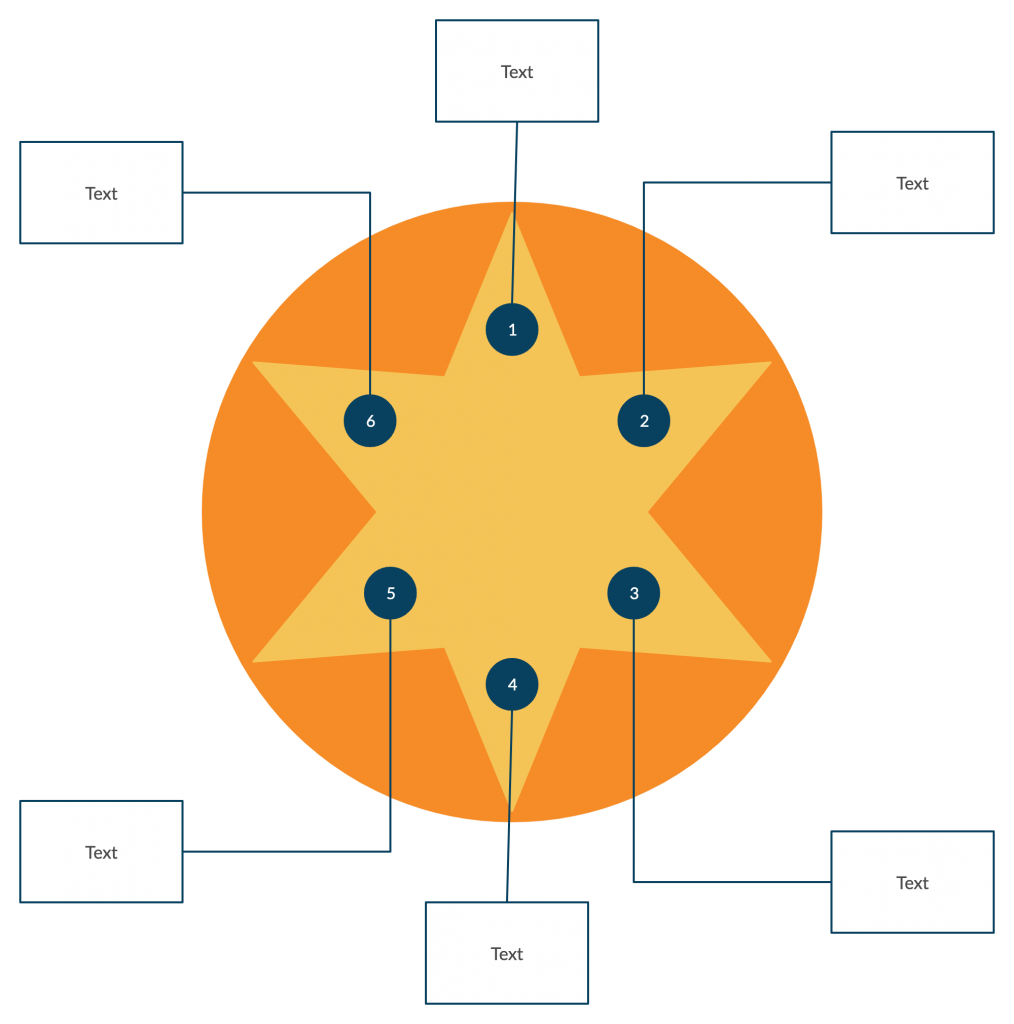
Graphic Organizers for Brainstorming
15. Cluster diagram
Cluster diagrams can be used to facilitate a brainstorming session or structure idea generation and even to help with exploring new topics.
How to use it
Step 1: Pick your topic of interest to explore. This should be placed in the middle of the diagram.
Step 2: Brainstorm around this main idea and come up with sub-topics related to it. Place them around the center.
Step 3: Brainstorm around each of the sub-topics and write down related ideas around them.
Step 4: Add as many layers as you want. However, use color-coding to emphasize each branch of thought. This will make it easier for you to read and understand the cluster diagram.

16. Lotus diagram
Lotus diagram is an analytical tool that can be used to breakdown broader and more complex topics into smaller components for easy understanding. It can be used for brainstorming and studying new topics.
How to use it
Step 1: Draw a 3×3 grid in the center. On the square in the center, write down the main topic to be explored.
Step 2: Write down the related sub-topics around it as you brainstorm.
Step 3: Draw 8 more 3×3 grids around the one in the center. Each of these can be used to write down facts that you brainstorm around each subtopic.
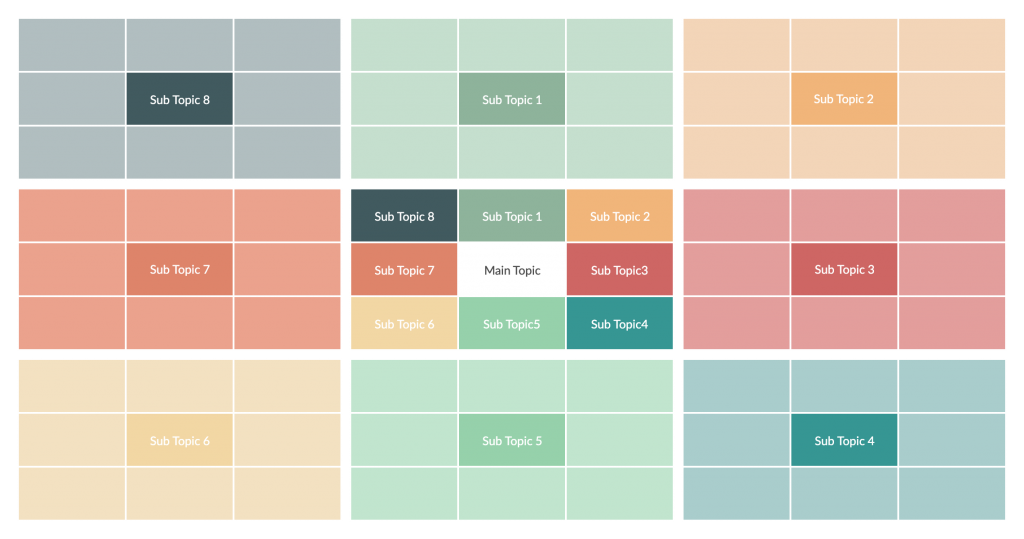
17. Cause and effect graphic organizer
This type of graphic organizer shows the causes and effects of an event. The cause is the reason why something has happened, and effect is the result of what has happened. Visualization helps clearly understand the different cause and effect relationships.
How to use it
Using a cause and effect graphic organizer, identify the causes and effects related to the problem you are studying or writing about. There could be several models of cause and effect events, such as one cause leading to one effect or multiple effects, or multiple causes leading to one effect or multiple effects.
- One cause leading to several effects
- Several causes leading to one effect (You can use a fishbone diagram here)
- Each cause having one related effect
- One cause triggering another cause that leads to another

18. Mind map
A mind map is a tool that helps capture the free flow of thought and is widely used for brainstorming around topics. Additionally, it can also be used to organize and group information about a topic.
How to use it
Step 1: Write down the topic you are brainstorming around in the center.
Step 2: On branches emerging from the middle, write down brainstormed ideas/ thoughts.
Step 3: Expand each sub idea with more facts. You can keep on adding more information to your mind map until you have enough.

Graphic Organizers for Compare and Contrast
Here we have listed 19 types of graphic organizers for teaching and learning. Based on their varied purposes, you can utilize them in reading, writing, researching, brainstorming, and analyzing. Best of all you can use our Compare and Contrast Chart Maker to draw them.
19. Double bubble map
The double bubble map is one of the popular thinking maps. It is much like a Venn diagram and is used to identify similar and different qualities between two things.
How to use it?
Step 1: Write down the two ideas/ topics you are comparing in the two bubbles in the center.
Step 2: As you brainstorm and analyze the topic, write down the differences in the bubbles radiating from the center.
Step 3: Write down the similarities in the bubbles that are common to both topics.

20. Venn diagram
Another graphic organizer that helps you visually represent a comparison of differences and similarities between two subjects, is the Venn diagram. What makes it different from the is that it can include more than two topics and one common area.
How to use it
It works similar to the double bubble map.
Step 1: Write down the topics being compared on the top of each circle.
Step 2: Writ down the differences or unique characteristics inside its own sector avoiding the overlapping area.
Step 3: List the similarities in the common area.
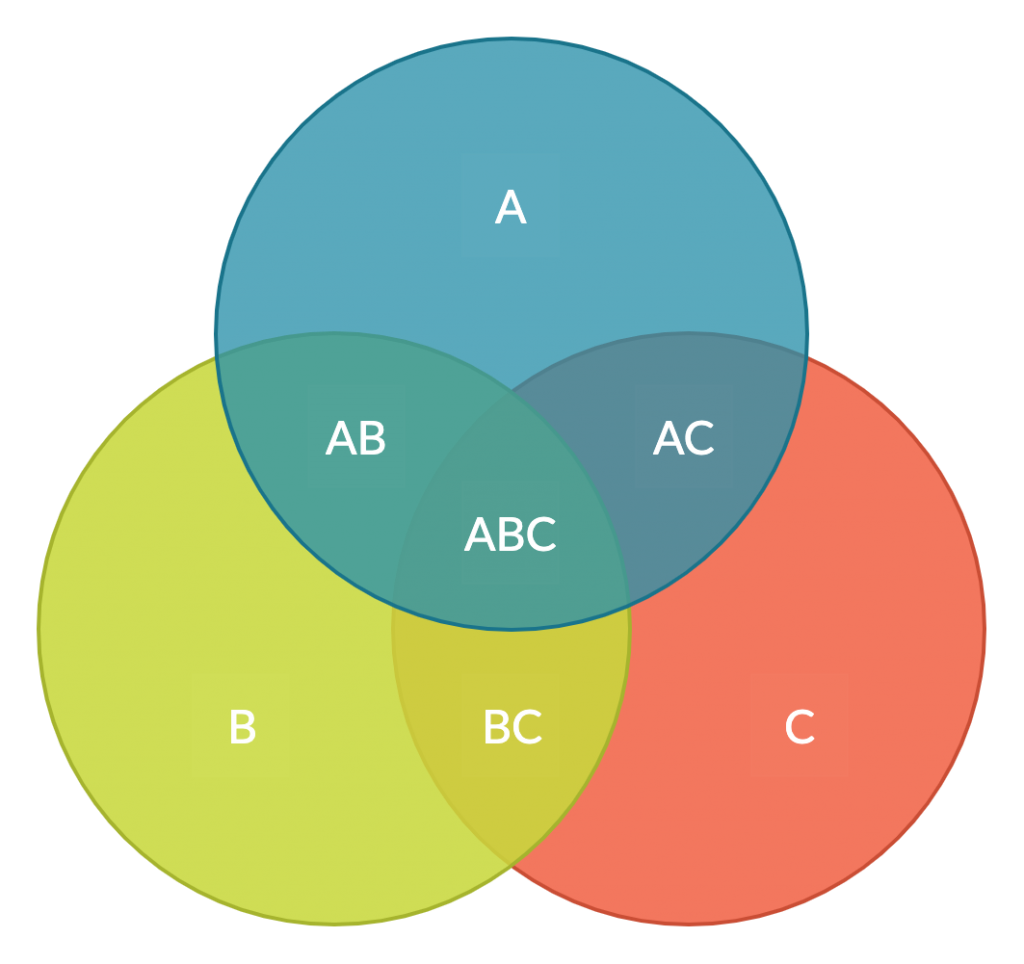
Add to Our List of Graphic Organizers for Teachers and Students
Although we have covered 19 types of graphic organizers in this post, there are plenty more that can be useful to our users. Know more? Mention in the comments section below to keep expanding the list of ultimate graphic organizers.
FAQs About list of Graphic Organizer
When selecting a graphic organizer for a specific project, you should consider the type of information you need to organize and the purpose of the project. Here are some tips on how to select the right graphic organizer:
Identify the type of information: Before selecting a graphic organizer, consider the type of information you need to organize.
Determine the purpose of the project: Consider the purpose of the project and what you want to achieve.
Consider the audience: Think about who the audience is for the project. If the audience is young children, a simpler graphic organizer like a picture web might be more appropriate. If the audience is adults, a more complex graphic organizer like a timeline or a chart could be suitable.
Evaluate the effectiveness of different graphic organizers: Try out different graphic organizers and see which ones work best for you. Creately has different graphic organizer editable templates that you could use to create your graphic organizer based on the purpose.
Be creative: Don’t be afraid to create your own graphic organizer or adapt an existing one to meet your needs. Graphic organizers are flexible tools that can be customized to fit different projects and purposes.
Avoid these common mistakes that you make to ensure that your organizer is effective in conveying information.
Avoid overcomplicating the design of your graphic organizer: It should be easy to read and understand, therefore avoid using too many colors, fonts, or shapes which make the organizer confusing and difficult to read.
Consistency is important in creating a graphic organizer. Use the same formatting, color scheme, and font throughout the organizer to ensure that it is easy to follow and understand.
The purpose of a graphic organizer is to simplify and organize information. Including too much information can defeat the purpose and make the organizer overwhelming. Stick to the most important information and use the organizer to highlight key concepts and relationships.
Use clear and appropriate labels for each section of the organizer. Avoid using labels that are too vague or unclear, as this can cause confusion and make it difficult to understand the relationships between the different elements.
Consider who the audience is for the graphic organizer and use appropriate language and images. Avoid using jargon or technical terms that may not be familiar to the audience.
Test your graphic organizer to ensure that it effectively conveys the intended information. Ask for feedback from others and make revisions as needed.





